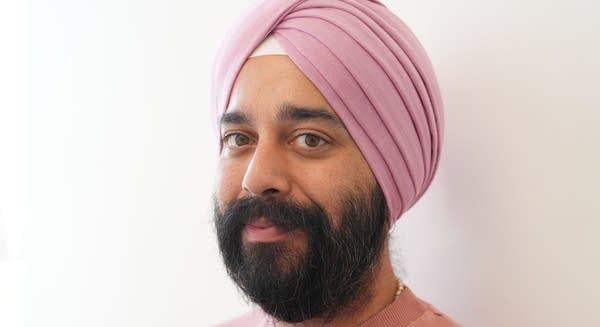Deciphering the diamond and gem district

We call ourselves Marketplace, so part of our job is exploring how marketplaces work, in all their forms. David Brancaccio and the “Marketplace Morning Report” team set out to visit five markets, all in the near-orbit of this program’s world headquarters in Los Angeles. None are financial markets in a formal sense, but all markets are financial markets in a way, right? The goal is to learn the right and the wrong moves with an expert.
Today, tricks of the trade among some glitz and glamor: diamonds, jewelry and gemstones.
The trading floor of the Pacific Stock Exchange, once just across the freeway from the Marketplace headquarters in Los Angeles, is long dead. But a short stroll the other way brings you to a set of retail trading floors that are very much alive: a cluster of 1,500 jewelry shops in mainly art deco buildings.
How do all these places stay in business? Experts say many shops sell on consignment, so they don’t have the enormous inventory costs of owning outright the diamonds, rubies, sapphires and other precious and semi-precious items they sell. But to really crack this market you need to take an elevator 20 floors up to B&B Fine Gems. These guys are wholesale pros, major players. They’re prepping air cargo shipments of gems to Hong Kong for display at an upcoming trade show.
Dave Bindra is vice president and head of acquisitions. In a conference room at the B&B Fine Gems office, Bindra displays sapphires from Sri Lanka, rubies from Burma and a 90-carat peach tourmaline from Mozambique.
“You never see these stones in this size, so clean, so rich in color,” he says.

Bindra’s father, Ruben, founded B&B 40 years ago after coming to the U.S. from Punjab in Northern India. Dave learned at Ruben’s knee but also did the graduate program at the Gemological Institute of America, where he’s now on the board of governors.
“You’re sitting under a microscope from 8 a.m. to 3 p.m. every single day looking at — at the end of the program — looking at hundreds of stones and identifying them,” he says.
The GIA is one of a handful of places that issue authoritative lab reports on gemstones.
“I would say, if it’s something of significance, it should have a gemological report,” Bindra says. “Without that document, you don’t really know what you’re buying.”
That’s a key Trick of the Trade: If you are spending any kind of serious money, insist on that certificate. And for people without his years of expertise, do not do this while foraging abroad.
“Someone will grab me in an alley and, you know, see me walking across the street and say, ‘Hey, I’ve got something for you.’ You got to take a look, and we have to move quickly to seize opportunities quite often in our space,” Bindra says.
But you need a good poker face, too. “That’s the first thing that my dad taught me,” Bindra says. “He said, ‘You love stones too much. You get too excited. You can’t — you’ve got to hide that emotion when we’re negotiating.’ And I said, ‘Well I don’t wanna hide my emotion. I love the stones, you know?'”
The poker face is useful in any market. But another takeaway is to not let some rando buttonhole you into a purchase.
“Trust is the very fabric that really holds our whole industry together,” Bindra says.

That’s a statement echoed by Mike Fried, CEO at The Diamond Pro, an online guide for buying diamonds — typically when it’s time for the ring.
“Unfortunately, there are also some less-than-savory characters in the diamond business,” Fried says.
Fried also has extensive experience in this field. He spent an eternity learning to pick out the best ones during his time at one of the great diamond houses, Leo Schachter.
“I spent six months in a sorting room where they would just pour thousands of diamonds onto my desk every day,” Fried says.
One theory for how this jewelry district can support so many shops has to do with LA as an international tourist destination. Gems and jewelry are easily portable stores of value that might appeal to shoppers visiting from countries with unstable economies. But Fried says the real selling point should be beauty, pure and simple. If you need portable store of value, he suggests gold — a standardized commodity with a clear market price.
Compare that with “when you walk into a jewelry store and you purchase that diamond, no matter how nice the guy is, he’s looking to make a profit. So you’re paying significantly over trade value for that diamond,” Fried says.
The age-old wisdom for buying diamonds is remembering the four Cs: cut, clarity, carat and color. But if you’re not a pro, how do you do that in practice?
“Well, in practice, you can’t,” Fried says. “And even an expert, once a diamond is in a ring, you can’t take precise measures there. Which is why a lot of people actually call them the five Cs instead of the four Cs — and the fifth is certification.”
There are good certifications, and there are less rigorous certifications. The Diamond Pro is helpful for determining which is which.
Find all of our Tricks of the Trade stories here.













